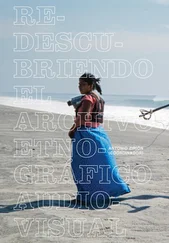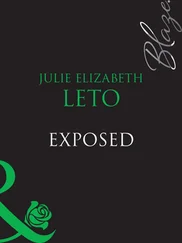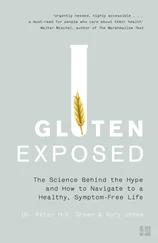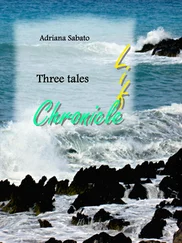According to Pass et al., “Quantification of the biologically relevant dose is required for the establishment of cause-and-effect radiation detriment or burden and important biological outcomes” (1997:390).
The BEVALAC was considered the only suitable accelerator for comprehensive studies of heavy ions. The decommissioning of the BEVALAC in 1994 put significant constraints on animal studies, as well as on experimental radiation therapy for terminally ill cancer patients at LBL.
“There is no doubt that theoretical approaches are going to play a major role, not only in terms of unifying various experimental data in a systematic manner, but also in terms of providing additional knowledge that may not be accessible to experimental procedures” (Chatterjee and Holley 1994:222).
According to Paul Rabinow, “Although this gap is not a new one, to be sure, the potential for its widening nonetheless poses a new range of social, ethical and cultural problems” (1996a:100).
FISH, which evolved over twenty years, is a useful tool in prenatal screening, tumor biology, and gene mapping, as well as biological monitoring for radiation induction.
It was also the tool available to some patients to calculate their dose burdens and risk status, although these calculations tended to be made on the basis of an examination of smaller numbers of metaphases, two hundred, for example.
Rad = Radiation absorbed dose. This unit indicates the amount of radiation dose absorbed in a unit of tissue or organ.
In the recent wave of current biotechnological ventures related to potential stem cell treatments, Gale has given up focusing on Chernobyl-related issues and directs research at a private biotechnology company specializing in stem cell research.
For further reading on contemporary accounts of Soviet terror, see Merridale 2000.
The city was a major border-controlling point at the time of the Bolshevik revolution; there the Extraordinary Commission to Combat Counterrevolution, the dreaded Cheka police, was given total authority to arrest and execute “counterrevolutionaries” and individuals who attempted to escape into northern Moldavia, Romania, or Poland. During the period of collectivization in the early thirties, the “kulaks” or the recalcitrant peasant “fists,” who refused to give up their land to the state, were rounded up there, shot, or deported to forced labor camps. Later, in 1941, Hitler established the city as one center of his Reichkommissariat in Ukraine, controlling the movement of migrants and refugees hoping to escape to Western Europe or at least to Poland and northward. Continual violence was targeted at heterogenous ethnic and religious populations on this site over a thirty-year period.
As a result of the state’s confiscating the foodstuffs of peasant populations, combined with drought, a famine ravaged Ukraine and the Volga region between 1921 and 1922. This famine, unlike the one in 1932-1933, was officially acknowledged.
It was unclear to me whether Mr. Pasichnyk had moved all of them himself. I asked and he answered, “Alone, I moved them, as if forever.” Bila-Skala, Ukraine, July 1992.
This church was quickly restored as a Polish Catholic church with the financial help of the Catholic Church in Poland.
The Old City of Bila-Skala once contained over forty Orthodox, Catholic, and Protestant churches on a relatively small land area. For the past sixty years, this Old City has remained in a state of ruin. The Armenian church was bombed during the war, and, like the Dominican church, its crypts are filled with human skeletons. One remaining synagogue was converted into a restaurant. Remaining Ukrainian Orthodox, Polish Catholic, and Ukrainian Greek Catholic groups were reclaiming ownership of religious property confiscated by the Soviet state under Stalin. Ukrainian Greek Catholicism was outlawed and operated as the “Church in Catacombs,” while Ukrainian Orthodox and Polish Catholic believers had some freedom of expression. The Russian Orthodox Church was the official church and a branch of the Soviet government.
In his book Camera Lucida, Roland Barthes described a process of discovering himself being turned into an object in the moment of being photographed: “[W]hat I see is that I have become a Total Image, which is to say, Death in person; others—the Other—do not dispossess me of myself, they turn me, ferociously, into an object, they put me at their mercy, at their mercy, classified as a file” (Barthes 1981:14).
Interviews with the Strokat family were conducted July/August 1992, Bila-Skala, Ukraine.
As Barbara Heldt points out, “There [was], of course, a gaping dichotomy between the rhetoric of reverence for women [in the former Soviet Union] and the actual use of their bodies in truly dangerous work, whether outside the home or in domestic drudgery. The high abortion rate… is also part of this disregard; contraceptive devices are in defitsit or not used by men” (Heldt 1989:163).
According to Dr. Tereshchenko of the Institute of Endocrinology and Metabolism, incidences of thyroid cancer in Ukrainian children living in contaminated territories were the following: 1986—7; 1989—13; 1991—26; 1992—47; 1993—43; 1995—46. The sharp rise in incidence also reflects the fact that monitoring had become more widespread in regions contaminated as a result of the Chernobyl disaster.
Offices of the Parliamentary Commission on Chernobyl, Kyiv, August 10, 1994.
The minister, much admired, died suddenly two years later.
Categories represent further subdividing of disability status. Category One refers to workers who were recruited to clean up the plant in the first days following the disaster.
He continued, “So dentists do the ultrasound monitoring for us.” Cases of thyroid cancer are expected to peak between 2000 and 2005.
Sveta was diagnosed with a condition called hypothyroidism. She was born in the western Ukrainian region of Zakarpattia, an area known for endemic iodine deficiency. Her deficiency was most likely not related to Chernobyl.
Territories surpassing the threshold limit were designated as state protected. Resettlement for populations living in these territories was guaranteed. Under Ukrainian law, the size of contaminated territories and types of contamination considered dangerous were expanded. The Exclusion Zone fell under the protection of the national government. The other three zones were demarcated according to the severity of radioactivity measured in those areas. For example, Zone Two contains radioactivity in the following amounts: cesium 15 ki/km 2, strontium 3ki/km 2, plutonium 0.1 ki/km 2. Zone Three contains radioactivity on the order of cesium 5-15ki/km 2, strontium 0.15-3ki/km 2, plutonium 0.01-0.1ki/km 2. The following radioactivity is found in Zone Four: cesium 1-5ki/km 2, strontium 0.02-0.15ki/km 2, plutonium 0.005-0.01ki/km 2. As of 1996, benefits to inhabitants of Zone Four were eliminated.
The complete name of the law is “On the Social Protection of Citizens Who Have Suffered as a Result of the Chernobyl Disaster.” I refer to its provisions here as social protection acts.
Читать дальше












